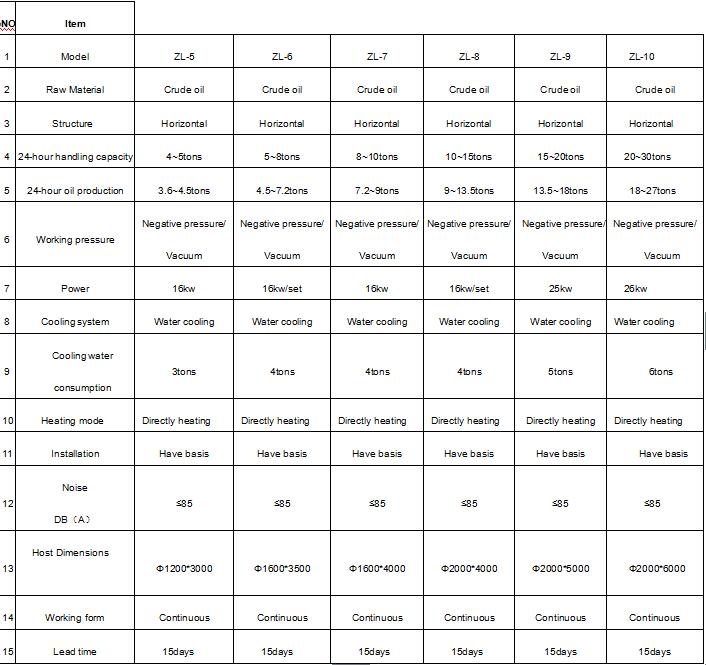A plurality of low-grade uranium-niobium metal lead deposit, niobium titanium metal minerals iron, galena, magnetite, pyrite, limonite, non-metallic minerals potassium feldspar, albite, Quartz , calcite , barite, etc. Uranium and strontium elements are mainly found in strontium-titanium uranium ore, including uranium and strontium minerals, such as brown pebbles, montmorillonite, vermiculite and limonite. The galena has a coarse particle size of 0.1 to 2 mm and is partially oxidized to white lead ore and lead vanadium . The results of many chemical analyses of the ore are shown in Table 1. I. Beneficiation test (1) Re-election tail From the analysis results of the original ore, it is known that the uranium content is 0.016%, the Nb 2 O 5 content is 0.028%, and the lead content is 0.75%. Their grades are very low, and the iron and sulfur grades are not high. According to the characteristics of poor, miscellaneous and difficult deposits, and the nature of ore and mineral composition, the re-election tailing process consisting of the original ore by hydraulic grading and beneficiation operation is mainly based on jigging, supplemented by shaker, spiral chute and centrifuge. It has created conditions for the development and utilization of low-grade uranium-bismuth deposits. Figure 1 shows the principle of re-election throwing principle. The results are shown in Table 2. The uranium content in the coarse concentrate obtained after tailing increased from 0.016% to 0.071%, 铌 increased from 0.028% to 0.1123%, lead increased from 0.75% to 3.19%, and 80.58% of tailings could be discarded. (2) Separation test of coarse concentrate The yield of coarse concentrate obtained after re-election is 19.42%. The lead content of uranium and plutonium is shown in Table 2. It also contains sulfide ore such as magnetite and pyrite. According to the characteristics and composition of metal minerals, the separation and selection are carried out by magnetic-floating process, from which uranium-plutonium concentrate, lead concentrate, iron concentrate and sulfur concentrate are obtained. The principle flow of coarse concentrate separation is shown in Figure 2, and the test results are shown in Table 3. 2. Metallurgical separation and extraction test of uranium and thorium concentrate The uranium-niobium concentrate separated from the ore dressing needs to be further extracted by metallurgical tests for uranium and plutonium The results of its chemical multiple analysis are shown in Table 4. Table 4 shows that the main available elements are uranium and thorium. Metallurgical tests mainly carried out sulfuric acid ripening conditions test, aging material leaching conditions test, leaching hydraulic boiling separation enthalpy conditions test, uranium extraction and stripping conditions test, hydrazine extraction and stripping conditions test. The results of the comprehensive condition test are shown in Table 5. The metallurgical test results show that the separation effect of uranium and plutonium is good, and the extracted ammonium diuranate and antimony pentoxide are high quality products. Third, the conclusion (1) The use of the jigging-based re-election tailing process for the low-grade uranium-pluton-lead polymetallic ore can discard more than 80% of the tailings, and the valuable metals are initially enriched. (2) The crude concentrate obtained by re-election and tailing can obtain lead, iron, sulfur concentrate and uranium-niobium concentrate by magnetic-floating separation. The uranium-plutonium concentrate further extracts ammonium diuranate and pentoxide products by metallurgical separation, making it possible to industrially utilize low-grade uranium-bismuth deposits that are poor, miscellaneous and difficult. (3) The test results show that the obtained lead concentrate contains Pb63.14%, iron concentrate contains TFe72.19%, sulfur concentrate contains S51.20%, ammonium diuranate contains U62.34%, and pentoxide The bismuth product contains Nb 2 O 5 92.62%.
1. Introduction of Waste Motor Oil Distillation Plant
Waste Motor Oil Distillation Plant ,is the new technology which can refine the waste motor oil into base oil(which can be made into diesel and gasoline after processed by our catalyst). The oil quality is better than the original normal pressure distillation technology, which show on purity ,transparence, lightness .this technology will do deodorization and destinke process to the raw material oil automatically by "dry type" vacuum pressure distillation method. With the vacuum distillation technology, the distillation temperature is considerably reduced, and the oil output will higher 5%-10% compared with original normal pressure distillation technology. It makes more profits to the enterprise virtually.
2. Raw material which can be used
a. Waste oil .example: waste diesel, waste oil residue etc.
b. tire/rubber oil
c. plastic oil
d. crude oil
e. waste engine oil
f. waste motor oil
g. waste lube oil
h. waste transformer oil
i. underground oil
3. Models of waste motor oil distillation plant
4. Installation: We will be in charge of arranging our engineer to go to your place to guide the installation and train your workers how to operate the waste motor oil distillation plant ,and buyer will be in charge of the food, accommodation and round air tickets.
5.Waste Motor Oil Distillation Plant Exporting Experience:
America:
Brazil, Canada, Colombia, USA,
Middle East:
Dubai, Iran, Jordan, Saudi Arabia, Turkey
Europe:
Albania , Bosnia and Herzegovina
Asia:
Afghanistan, India, Malaysia, Pakistan, Philippines, South Korea, Vietnam, Myanmar
Africa:
Ghana, Mozambique, Zambia
Waste Motor Oil Distillation Plant Waste Motor Oil Distillation Plant,Used Motor Oil Regeneration Plant,Waste Oil Recycling Diesel Plant,Diesel Oil Distillation Plant Shangqiu Sihai Energy Technology Co., Ltd , https://www.sihaienergy.com







